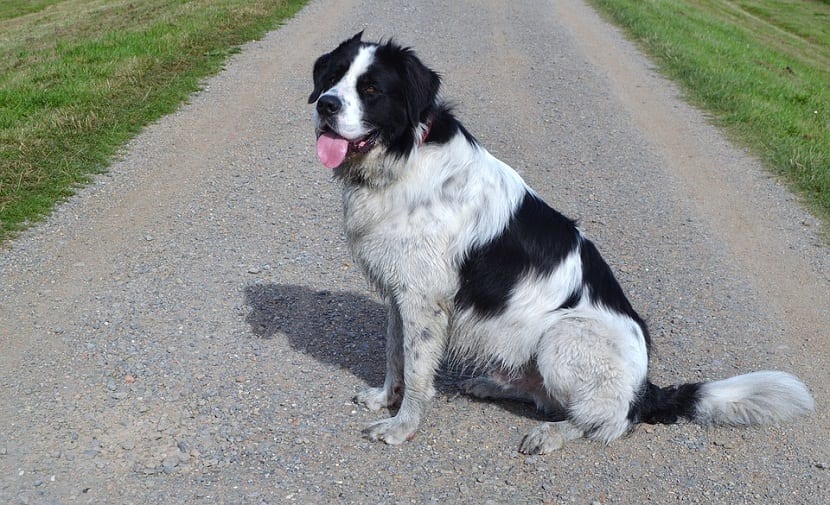
The Newfoundland dog breed is among the giant size dogs. This dog is often confused with the Saint Bernard because of their physical resemblance and because of their character, however they have different physical characteristics and stand out in rescue in water and in snow.
Size divides dogs into small, medium, large and Giants. The latter are not the most abundant, but they are definitely one of the kinder, gentler and braver and that they have almost always been used in the noble task of safeguarding lives.
Canadian origin of the Newfoundland breed
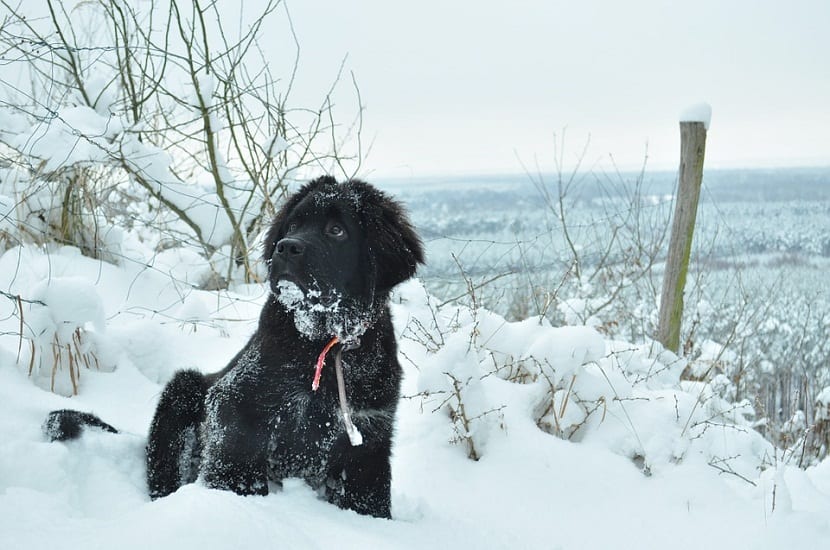
Their gentle appearance has earned them a place in history and they have been deeply appreciated by their owners. The characteristics of this breed immortalized them in characters from children's literature such as Peter Pan's Nana by the author James Barrie. He has also been a very real figure like Seaman the mascot of the explorers Lewis and Clark or Boatswain the Newfoundland of Lord Byron and whose epitaph is undoubtedly the envy of many deceased.
This breed is not for everyone or just any physical space. Their conditions demand a care and attention that can hardly be achieved in urban areas and although having them is a guarantee of loyalty and care, they deserve that their masters are informed as best as possible about their needs.
The term Newfoundland originates from the English Newfoundland, a territory that currently belongs to Canada and was an English colony rich in fishing. The inhabitants of the area and the new citizens they considered that a strong breed of dog would be very helpful in helping with fishing.
The Newfoundland was ideal as its strength and swimming skills were very useful. Of course, this was accompanied by a calm character essential to face risky situations without unbalancing your temperament. For this reason it was also ideal as a rescue dog.
The Newfoundland breed shares similar characteristics with other members of the Mastiff family, such as the St. Bernard and mountain dogs like the Great Pyrenees. Its origin dates back to the XNUMXth century when Portuguese fishermen mixed the dogs brought by them, giving rise to Greater Newfoundland.
Both types of dogs they were used for heavy work that involve the hauling of nets and transport of equipment. By the nineteenth century there were already several famous Newfoundlands and anecdotes abound of the bravery of the breed in rescue work. From 1914 the breed was prosperous until the onset of World War II almost led to extinction.
Features
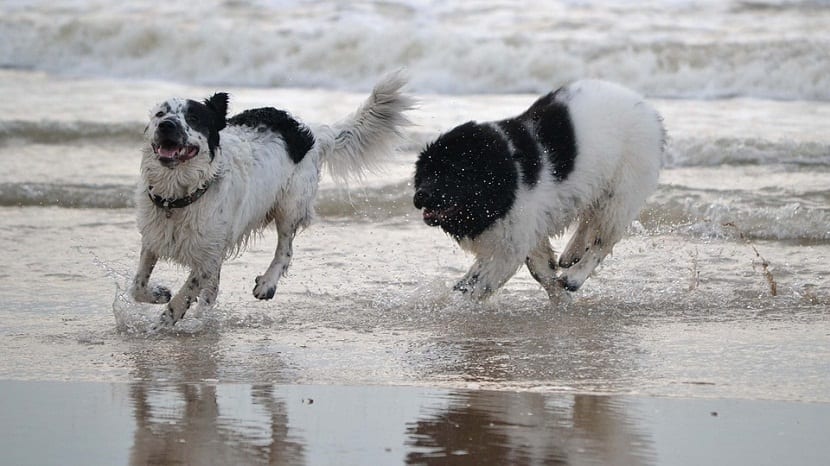
In its physical aspect the Newfoundland breed is similar to other mastiffs in regards to the short, thick legs and webbed feet ideal for swimming. The head and muzzle is large and the color of the nose will depend on the tone of the dog. Her eyes are small, wide and sweet.
The bone structure of these dogs is really strong. The males of this giant breed can weigh between 60 and 70 Kg with an approximate size of 72 or 90 cm at the withers. Females are slightly lighter and weigh between 45 and 55 kg.
The most abundant color among the breed is black, with brown, white with black parts and gray being accepted. His mantle is abundant and covers his entire body. The tail is strong, heavy and it functions as a rudder when swimming. It has a waterproof double layer coat, the outer being longer and smoother and the inner soft and short. Both are thicker in summer than in winter.
Character of the Newfoundland
These dogs possess all the gentleness in character for which they have been recognized. His patience with children is infinite and it is accompanied by a distinctive sweetness, since they are docile and calm by nature. If they are educated from puppies, they socialize with other pets and young children, controlling the risks of their size.
This breed is familiar by nature, to Despite its size, it requires company and feeling that it is part of the family dynamics. They require space to exercise and will enjoy nothing more than a good dip in muddy terrain. Of course, it is quite a sight to see his incredible agility in the swim.
Health, care and diseases
In ideal conditions the Newfoundland can live ten years. It is one of the shortest life expectancies among dogs since the larger the breed the longevity decreases. The care is basically the same always directed by a veterinarian.
It is necessary to control vaccines and avoid parasites. Food, as is logical to imagine, will not be cheap since not only do they eat a lot but it must also be quality feed or food to ensure the health of the pet. It is a fairly large animal and it does not need to be obese at all, so the rations should be controlled according to its age and physical activity.
With regard to hygiene, it is necessary to get used to brushing their teeth regularly from a puppy, although it must be said that the bath It is not an activity that they dislike and it can be done once a month. To do this, you can opt for a dog groomer or live the experience of a good bath in the garden.
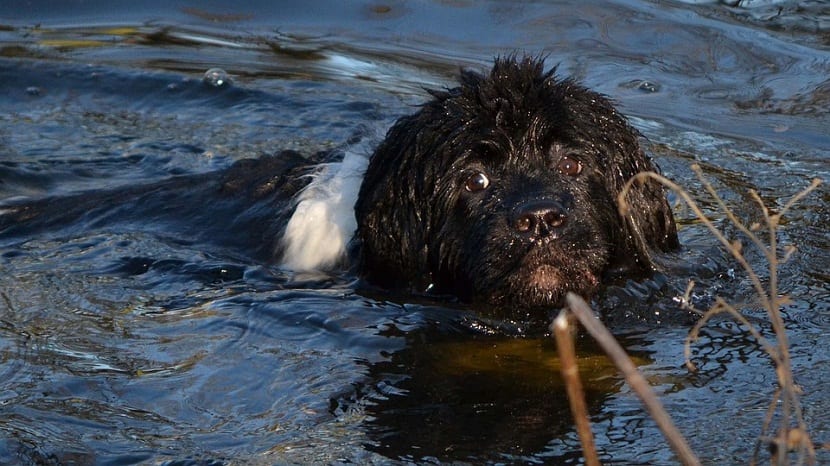
The typical health problems of the breed are hip and elbow dysplasia condition to which they are prone due to their size and weight. Bladder stones known as cystinuria is an inherited health condition for the breed. Lastly, they are prone to a heart condition known as stenosis. This health defect involves the incorrect functioning of heart valves that can cause sudden death at an early age.
Recommendations
The Newfoundland breed is truly one of the most wonderful in the world. The loyalty, desires for service and affection that this pet provides is unmatched. Dogs profess fidelity and affection to their masters by nature and that is a statement with which many agree.
It is necessary to be a responsible owner, be able provide all the needs that the pet requires. Early education is also important, as not being able to control a 70-pound pet is not an ideal scenario. These dogs are not violent, but their incredible strength without control can be risky if they are not educated.
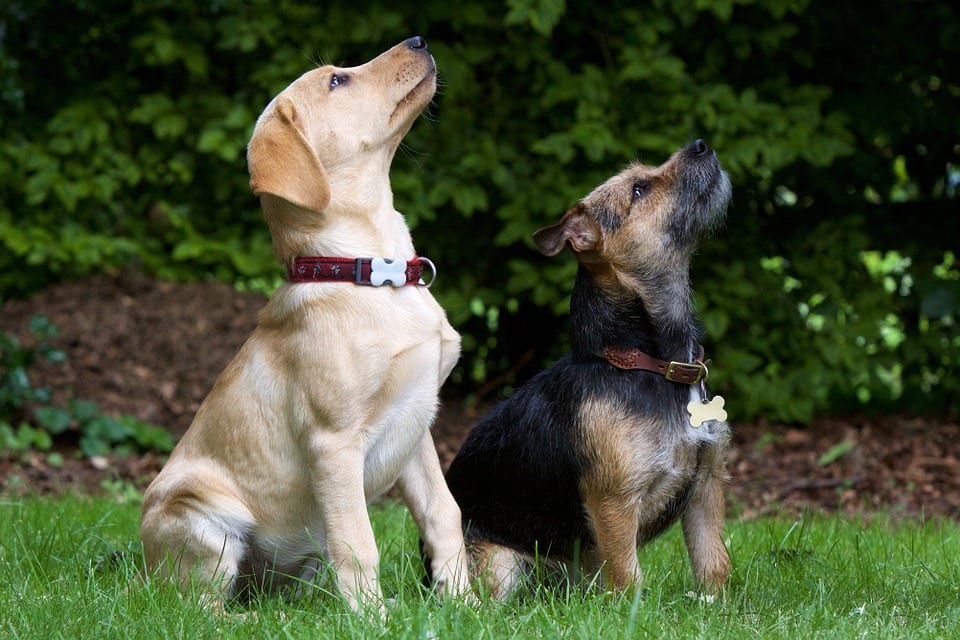
Newfoundlands are friendly pets, but not mischievous or playful. They have the ideal character for childrenThat's why she was the ideal model for Peter Pan's Nana. She protects those she loves with her life if necessary, which is why they deserve all the attention and care.